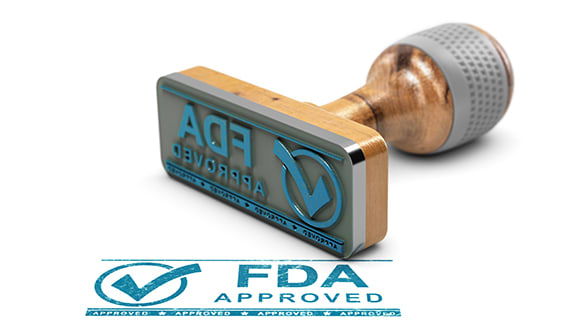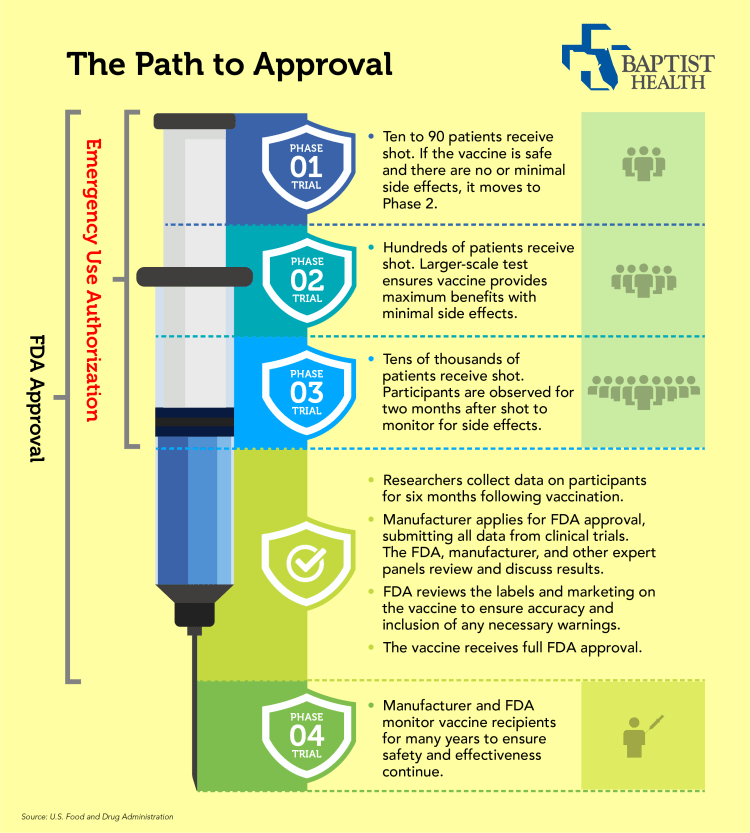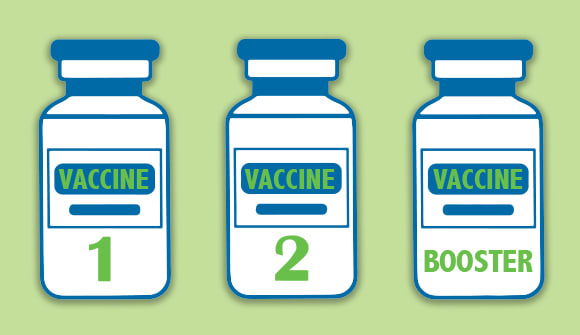Vaccination creation
How years of research culminated in safe COVID-19 shots.
Article Author: Katie McPherson
Article Date:

Pfizer’s coronavirus vaccine is officially approved by the U.S. Food and Drug Administration (FDA) after months of authorization for emergency use. If that seems fast, it’s important to understand that all the steps in achieving emergency use authorization (EUA) are also part of the FDA’s full approval process. In fact, they’re the most important components of all.
Making mRNA vaccines
While the COVID-19 vaccines are the only ones on our minds these days, they’re certainly not the first to reach the arms of millions of people worldwide. Thanks to all the immunizations that came before, scientists were able to create these vaccines in record time using a different type of technology than we’ve seen before: mRNA.
“These types of vaccines are cheap and easy to develop, which is perfect for a pandemic,” said Shalika Katugaha, MD, system director of Infectious Diseases for Baptist Health. “Unlike other types of vaccines, with these, you don’t have to spend time growing bacteria or a virus, which is what makes them quicker.”
And, because of prior public health threats, like H1N1, the FDA was prepared with an EUA process to distribute the vaccine faster than ever before.
How exactly did we get to this point? Dr. Katugaha helped break down the timeline for vaccine development.

Suspicious of side effects?
Dr. Katugaha acknowledged that, yes, certain vaccines in the past (like the oral polio and swine flu vaccines) did have major side effects that led to their removal from the market. However, in every vaccine ever created, major side effects have never cropped up more than two months after the shot itself.
“In the history of vaccines, there have been some with concerning side effects, but these happened within the first eight weeks of vaccination. There’s not a vaccine in history I can point to and say, ‘Man, three years after it came out, scientists said it was bad,’ so we shouldn’t have this concern with the COVID-19 vaccines.”
The first of its kind
For some, the vaccines’ use of mRNA technology is concerning simply because it has never been used before. However, mRNA vaccines have existed and been in testing since the 1990s. They hadn’t been widely used sooner because there was one last hurdle to leap.
“It’s hard to keep mRNA stable. To address this, the scientists packaged the virus’ mRNA in these lipid nanoparticles, which is a fancy word for fat droplets, so when they enter the body, they don’t get degraded,” Dr. Katugaha explained.
So, while some people have expressed concerns that the vaccine was rushed, it turns out that there are scientific reasons it was available to the public so quickly. For more information, listen to Dr. Katugaha’s webinar on the COVID vaccine.
At Baptist Health, we want to help keep our community informed about COVID-19. For more information about COVID-19 vaccines, visit baptistjax.com/covid19vaccine. Click here to find a vaccination location near you.



